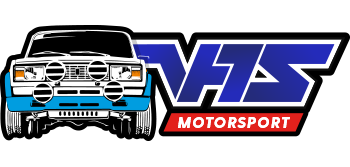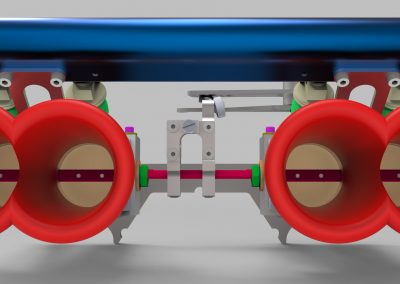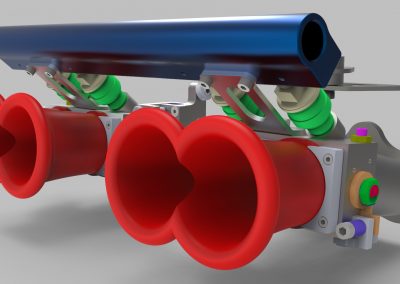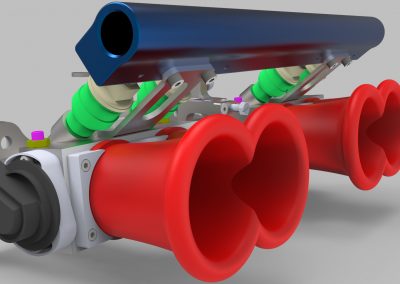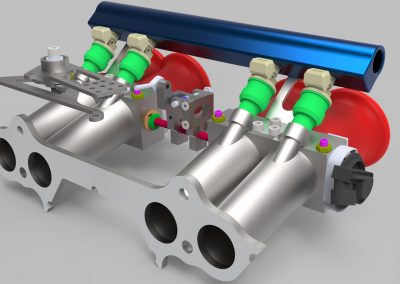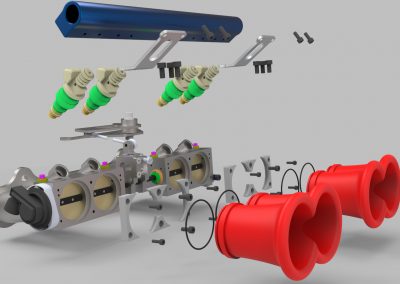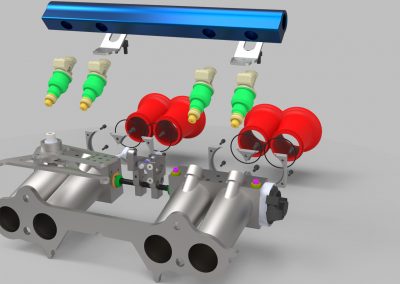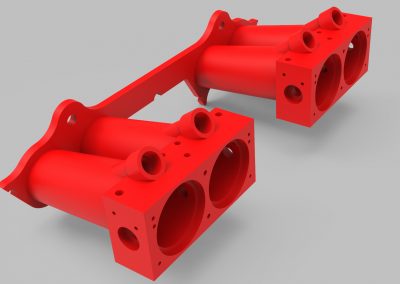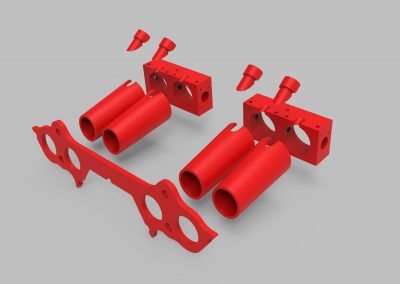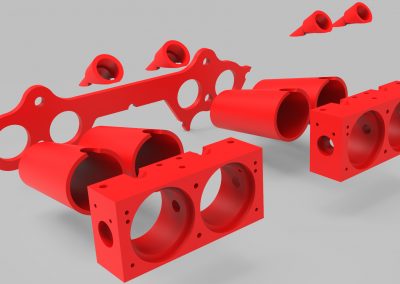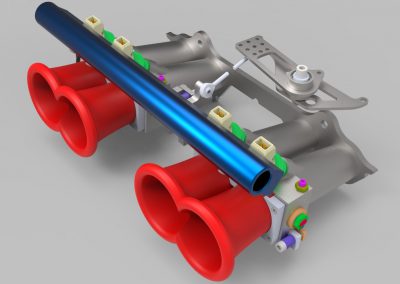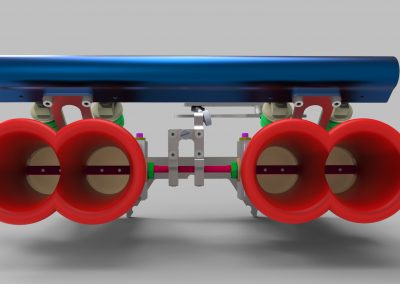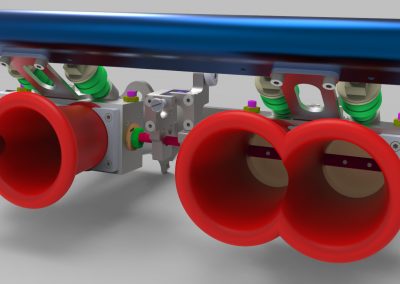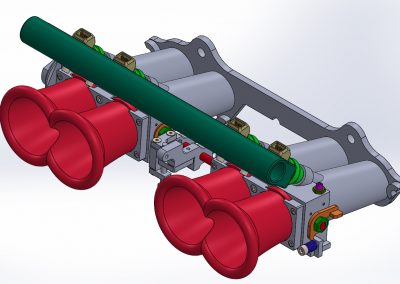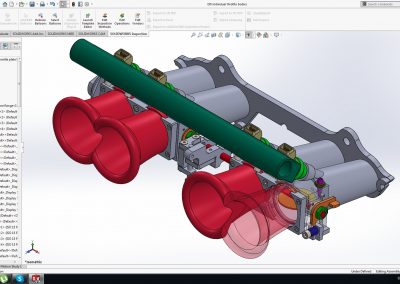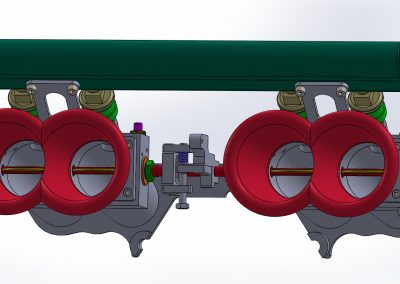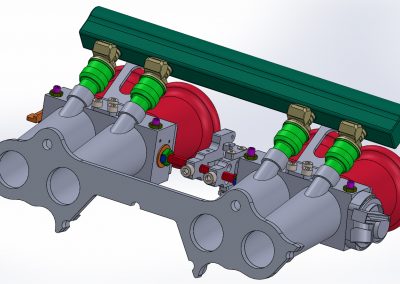DIY Individual throttle bodies (ITB)
The idea of this project was to create simple and affordable set of individual throttle bodies that can be easily adjusted to suit the needs of everyone. The ITBs are fabricated from individual parts that are assembled and welded in the end. The material used can be steel or aluminum, depending on the preferences and availability of material. For further simplification and ease some parts are 3d printed, so complex shapes like the velocity stacks can be created very easily, compared to other usual methods like turning or casting. The parts are built with simple features that allow the user to make changes fast and easy, so the final part can fit his preferences.
The main parts in this open source project are the two throttle blocks. They house the throttle blades, the air bypass system for synchronizing each individual cylinder, throttle shafts and bearings. The current size of the throttle blades is 40mm, but this can be easily adjusted to your preferences. This size can support around 35 BHP/cylinder up to around 9000rpm; this will strongly depends on several factors like: engine displacement, cylinder head design, valve size, position of the throttle body and the injector along the intake path. In the 3D model the length between the throttle blade position and the intake valve is 213.5mm, which is plenty enough for engine revving to 7 – 9000rpm (with minimal advisable length of 200mm for the rev range stated above). The distance between the face of the velocity stack(air horn) to the center of the valve head is 289mm, which is enough for engine revving to 9000rpm. To get an idea how scale this distance, you should take a look at these numbers: recommended length for engines revving to 9000rpm is 290mm, this distance goes down to 175mm for a engine spinning up to 18 000rpm. You can get rough idea what you need from the numbers above and bear in mind that this affected by the size of the air box and the type of air filter used. For the whole setup to work properly the fuel injector location is also of importance. The best place to put it is right after the butterfly. Doing so has the advantage of very good fuel and air mixing, due to the turbulent flow after the throttle blade. This with conjunction with the distance of the butterfly from the valve of the head, give enough distance of the air/fuel mixture to settle before being sucked by the cylinder.
The injectors used are standard type with part number: Bosch 07813355IN, this is the part from the assembly, but you can use also: Bosch 0280150415, or Bosch 037906031AA. For the last one you need to alter the length of the fuel rail bracket, because it is physically shorter that the other two. You can use any injector of your preference, just need to make the necessary changes to the parts around them.
The flange of the 3D model is for LADA 2101-2107 cylinder head, which this part was originally developed. It is very easy to model your flange and rearrange the intake manifold runners to suite your needs.
The actuator mechanism is a lever type, so it can be attached to the existing system of the vehicle it is meant to be. Also it can be easily adjusted to work with throttle cable or drive by wire setup.
The area around the TPS will need some attention to make it fit the sensor you have available or planning to use.
This model can give you a good idea who such an assembly is supposed to work and what the main parts and mechanism are.
You can always contact me with question, or if you need help modifying the parts to your specifications. Also I can supply set of 3D printed velocity stacks (air horns) according to your specifications.
This model is made by me and it is free for download and I want it to remain like that. The model cannot be used for commercial purposes.
If you undertake building this part, I can’t be held responsible for any injuries or damage to your property.
Some of the reference numbers stated above are taken from here: https://www.jenvey.co.uk/assets/Uploads/XJEN29-Sales-Bro-Webfile-High.pdf
Here’s an interactive visual to show every detail. You can rotate and zoom in and out.
You can download the file in native SolidWorks part files and drawing or in several other file types like:
